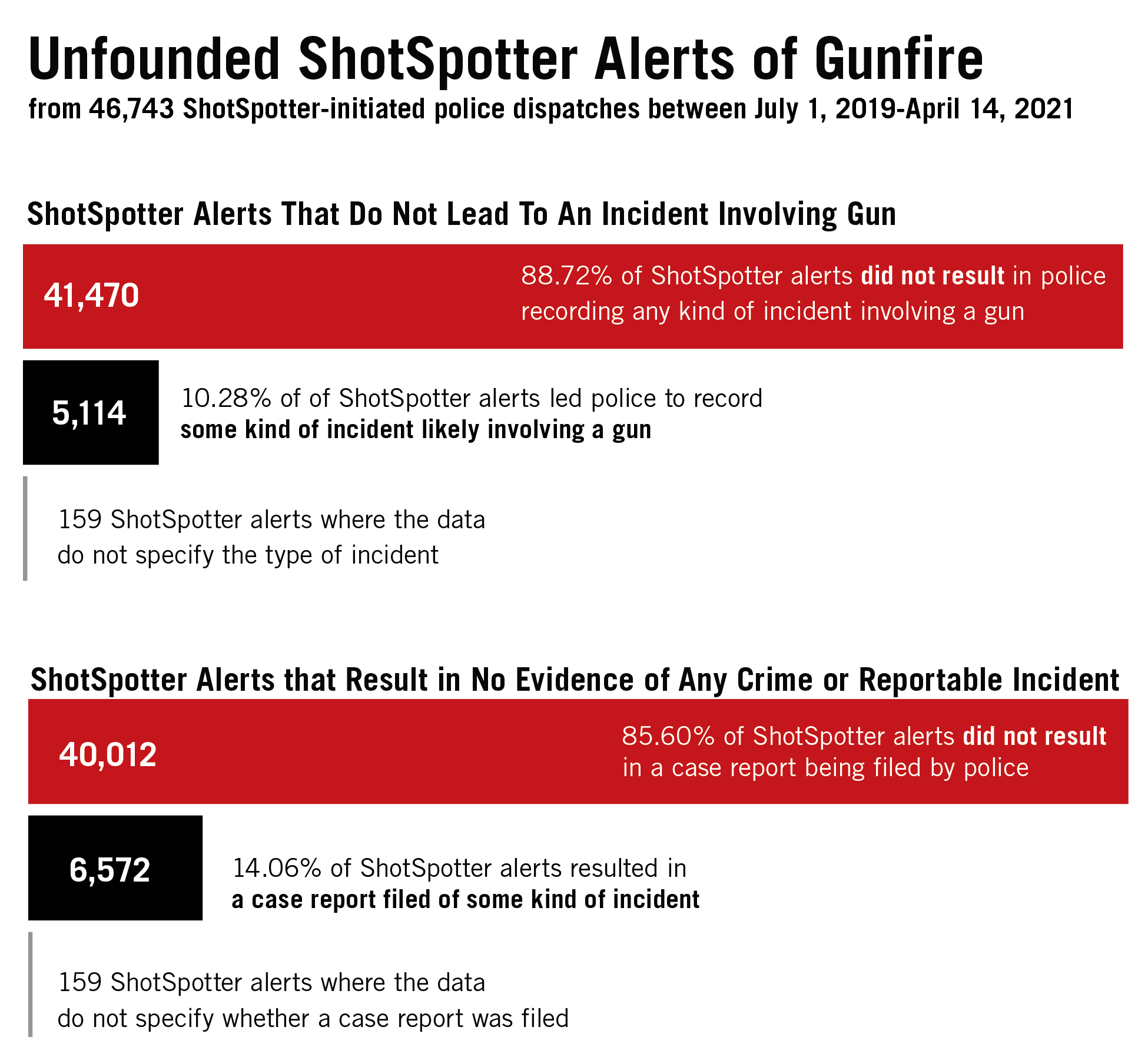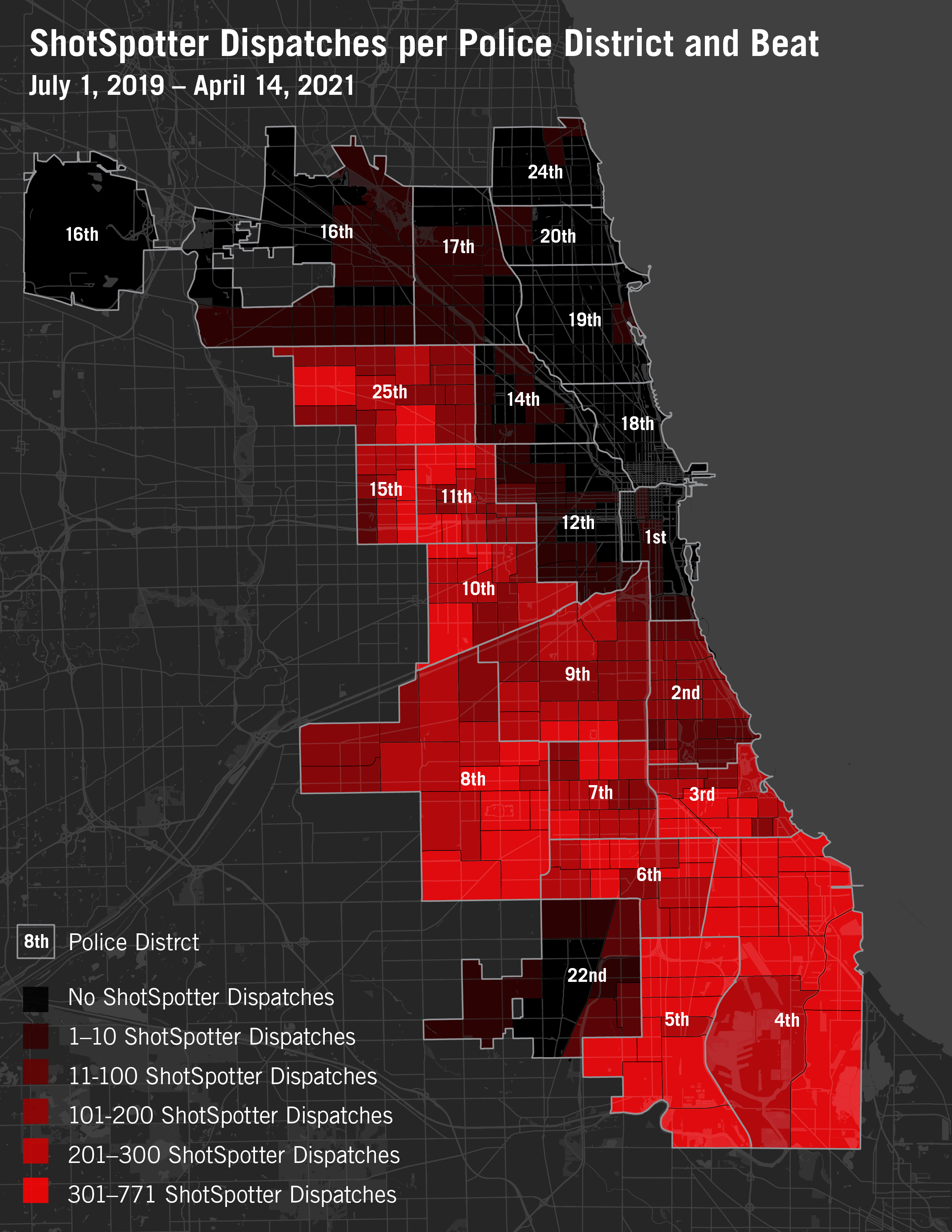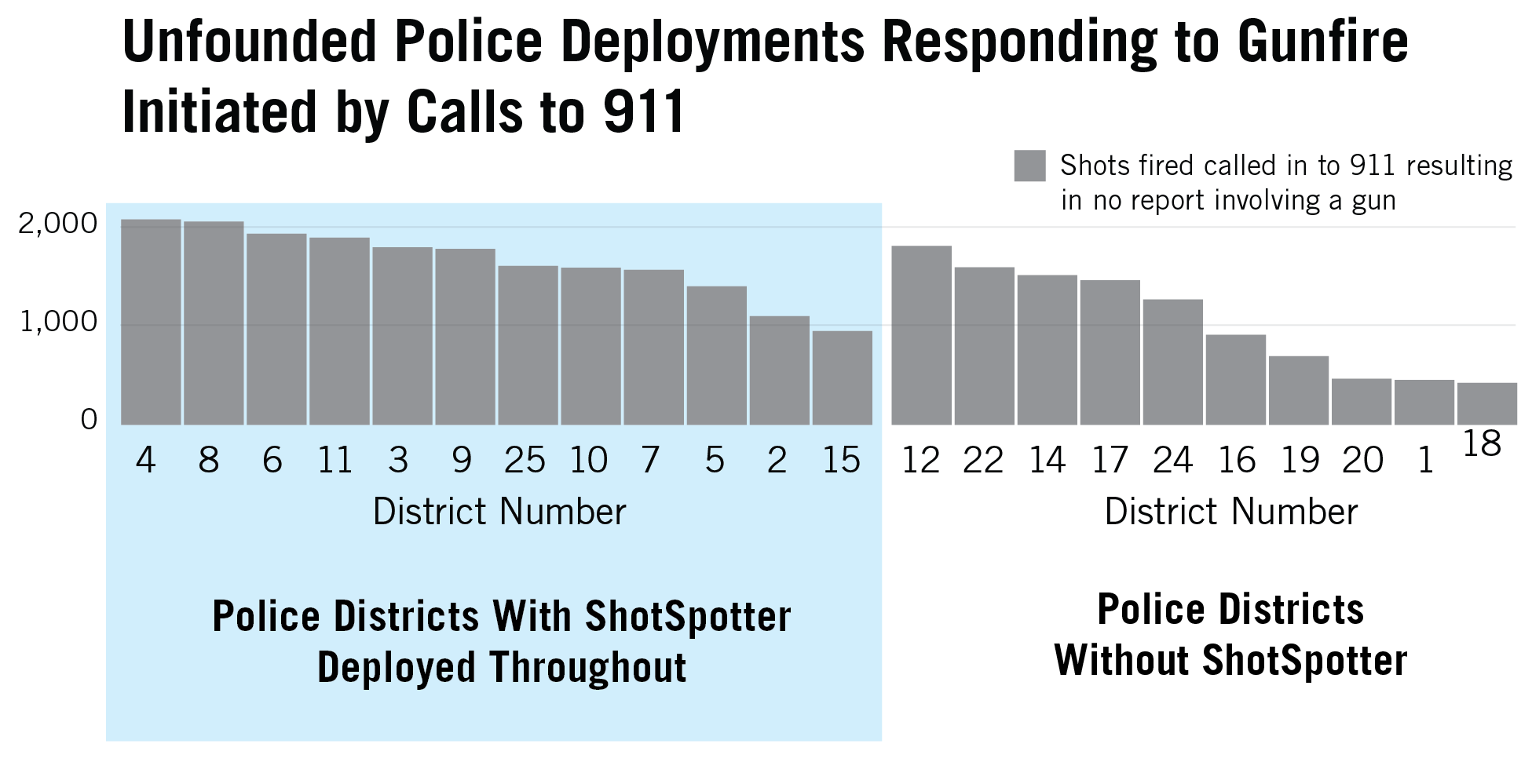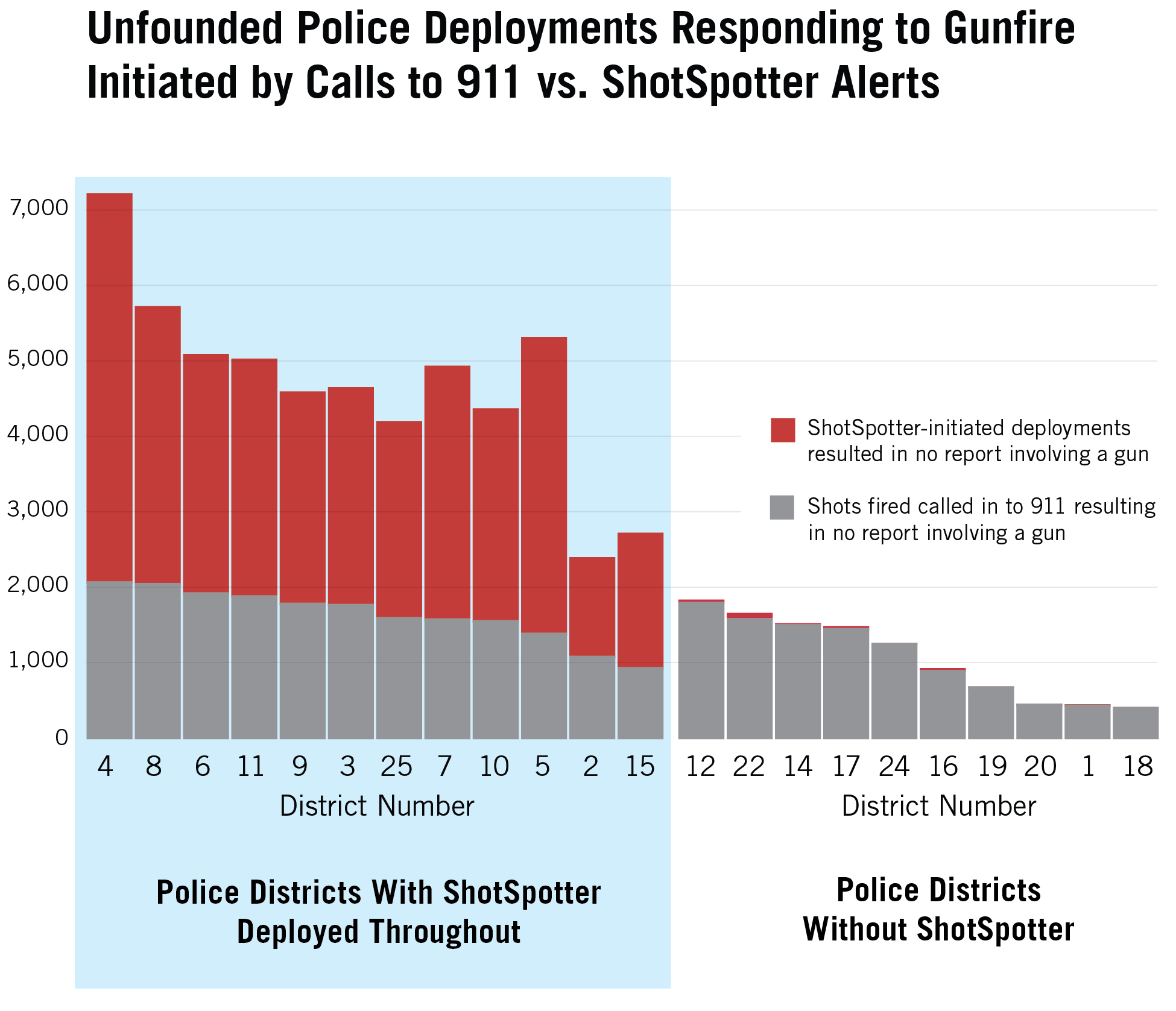Data Visualization & Infographics
A People's Guide to Los Angeles
A People's Guide to New York City
Antipsychotics in U.S. Nursing Homes
Calendar of Killings by Police
Conflict Dynamics around Refugee Settlements in Northern Uganda
Data Visualization and Human Rights
Executions and disappearances in Punjab
Gold Trade in the Democratic Republic of Congo
Human Rights Watch World Report 2005
Journalists Imprisoned in China
Kardze Tibetan Autonomous Prefecture
Nigeria School Attacks Timeline
Policing Poverty and Racial Inequality in Tulsa
Selected CIA Aircraft Routes and Rendition Flights 2001-2006
Stephens, Catherwood, and Katz
Timeline of Boko Haram Abductions
Visualizing Data for Human Rights Advocacy
Visualizing Information for Advocacy: An Introduction to Information Design
ShotSpotter
ShotSpotter is a surveillance system that blankets select neighborhoods with microphones and is meant to detect the sound of gunfire and pinpoint its location. The system then sends alerts of supposed gunfire directly to local police to investigate.
Through a Freedom of Information request, the MacArthur Justice Foundation acquired data on ShotSpotter-related police deployments from July 1, 2019 through April 14, 2021 in the city of Chicago.
The over 46,000 ShotSpotter dispatches overwhelmingly target majority Black and Latinx communities, sending police on high alert for gun shots into already over-policed neighborhoods. And, though ShotSpotter claims 97% accuracy, the data shows 89% of ShotSpotter deployments turned up no gun-related crime, and 86% led to no report of any crime at all.
I developed a series of charts and maps to illustrate findings from the data. These are posted to endpolicesurveillance.com and incorporated into the Center's Amicus Brief.





